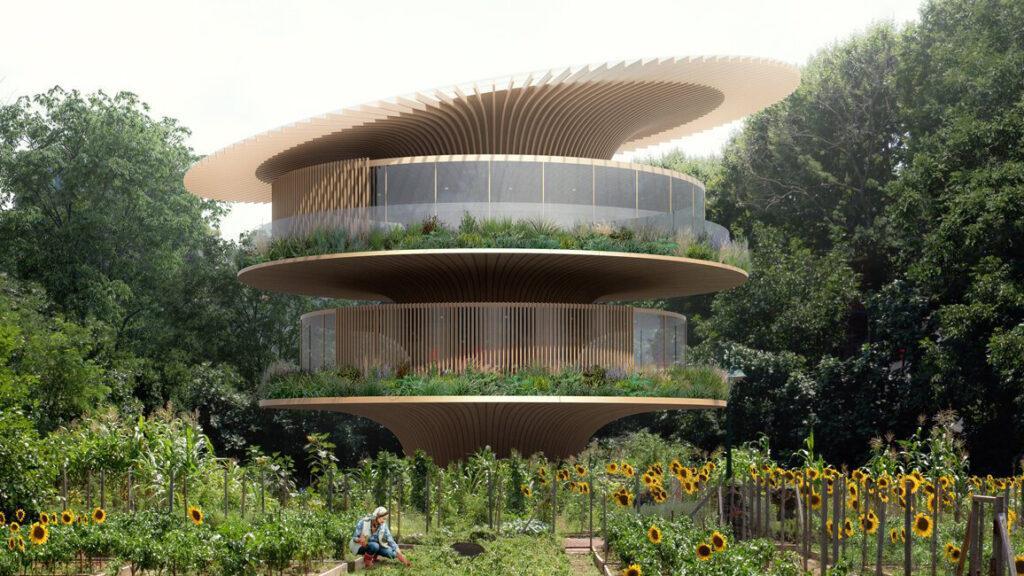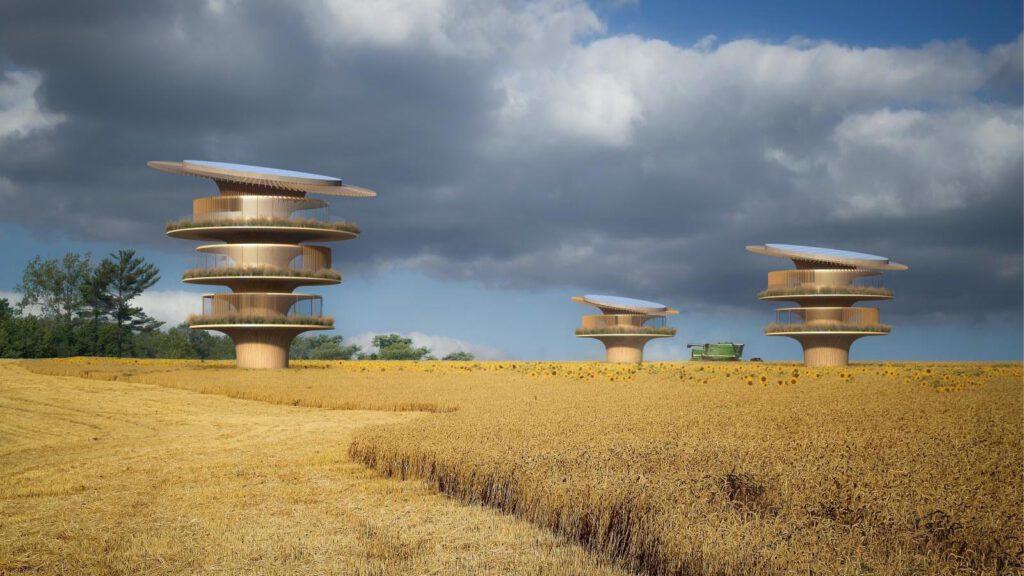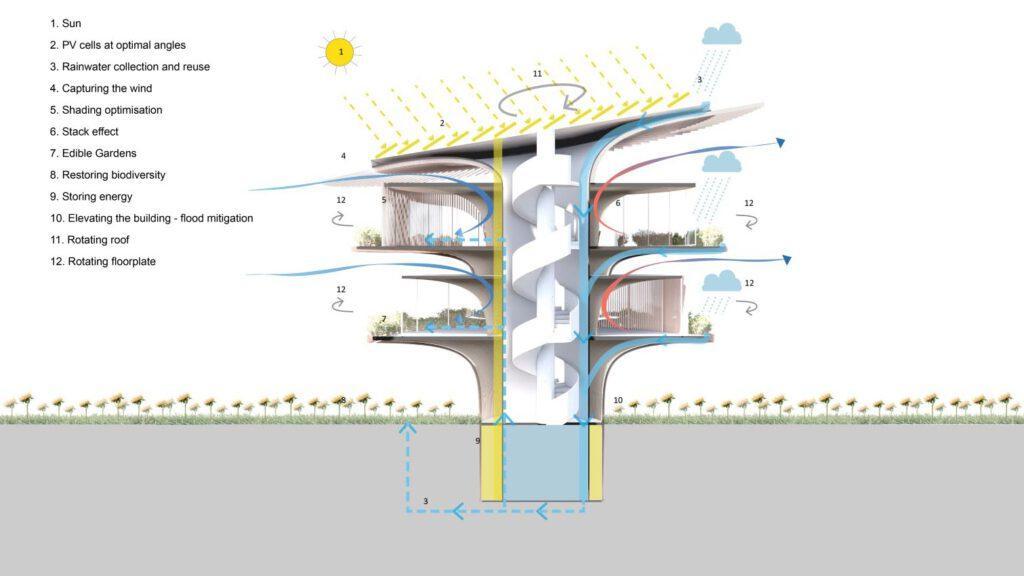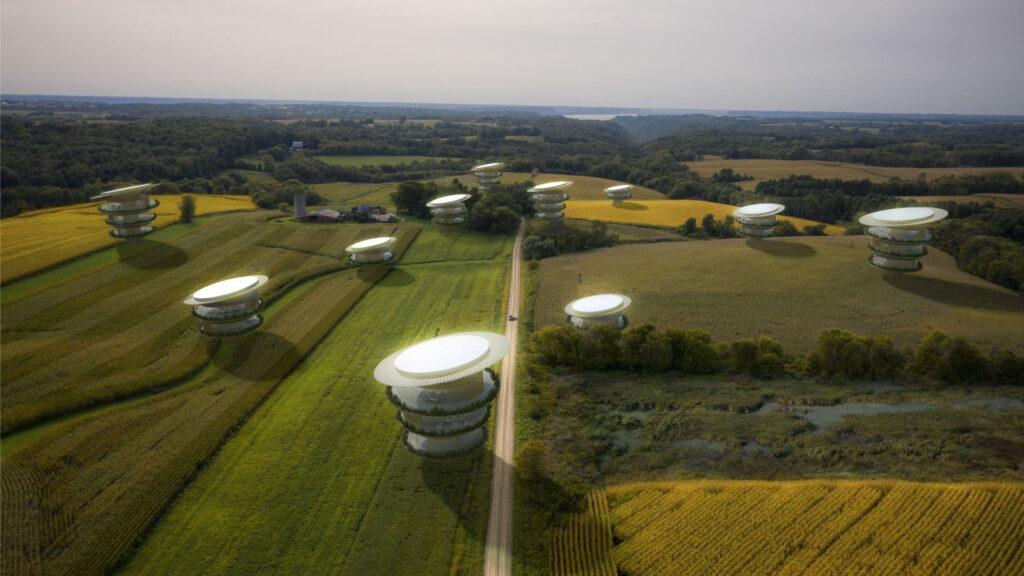Time for a new Bauhaus
EU President Ursula von der Leyen wants to put climate neutrality centre stage. The first official related project is called Sunflower House and is based on the internal workings of sunflowers.
Exactly 102 years ago – in 1919 – architect Walter Gropius founded the Bauhaus movement in Weimar. It was arguably the most influential school of modernist thought on architecture, art and design.
“Bauhaus literally helped shape the social and economic transition to an industrial society and the 20th century,” wrote EU President Ursula von der Leyen in a highly regarded guest article in the Frankfurter Allgemeine Zeitung. “A hundred years later, we are facing new global challenges: climate change, pollution, digitalization and a demographic explosion predicted to increase the world’s population to up to 10 billion by mid-century.”
A new Bauhaus is needed
However, she believes action needs to go well beyond merely cutting emissions: “The Green Deal must also be a new cultural project for Europe. [We need] to combine sustainability with good design.” This means that architects, artists, students, systems scientists, engineers and designers all need to work together.
We will launch a new European Bauhaus. The goal is to achieve climate-neutral cities that are more liveable.
Ursula von der Leyen, EU President
Specifically, von der Leyen aims to launch a “new European Bauhaus”. One that should “stimulate debate on new construction methods and design forms”. And seeks “practical answers” to the “question of what modern life in harmony with nature can look like”.
Needless to say, it should also make full use of digitalization: “The goal is to achieve climate-neutral cities that are more liveable.” Von der Leyen announced plans for five projects in different EU countries in the coming two years.
Sunflower House unveiled
The first of these projects has now been presented to the general public. The architect Koichi Takada, renowned for his ecological concepts, has published his intrepid vision of a Sunflower House.
This settlement concept is based not only on how real sunflowers look but also on the way they function as a whole. On behalf of the European Union, Takada was briefed by Bloomberg Green to design a dream house symbolizing Europe’s green future. The aim was to help create a new joint aesthetic arising from the urgent need to tackle climate change.
Umbria: ecological hotspot
And so the eco-revolutionary designer set about finding a suitable plot of land. It needed to be a location in which a “carbon positive single-family dwelling” makes sense even beyond the structure itself.
The star architect ultimately decided to locate his Sunflower House in the Italian region of Umbria, which is “renowned for its rolling farmland and yellow fields of sunflowers”. However, the severe heatwaves that this region has been experiencing more and more regularly in recent years have taken their toll on its gigantic sunflower fields.
Takada is now planting a “sunflower settlement” of his own in this problematic area. His goal is firstly to draw attention to the situation and secondly to demonstrate just how much we can learn from sunflowers.
Following the sun
Above all, their capacity to move constantly with the sun was taken on board in the design and mimicked in the technology. Through its circular structure, the Sunflower House rotates with the sun around a central “stem” (just like the internationally hyped Smartflower solar power system).
As the solar panels always capture as much sunlight as possible, they produce 40% more electricity than static modules. This not only covers the energy requirements of the Sunflower House itself but even generates surplus power on especially sunny days.
Sun or water?
The operators can either feed this surplus energy back into the grid (and earn money in the process) or store it in integrated accumulators: Takada calls them “battery seeds”. The rotary motion of the solar collectors is designed to provide windows underneath with shade at all times as well. This prevents the rooms inside from heating up as quickly, which in turn means that less energy is needed to cool them.
Retaining biodiversity
Each structure is also designed to collect rainwater instead of sunlight when the weather is bad. As the planners point out, this is to be used for flushing toilets and irrigating the surrounding sunflower fields. In addition, Koichi Takada explains that the Sunflower House is “elevated from the ground to minimize interference with the biodiversity of its surroundings”.
However, there is still plenty of room for residents. Each floor of the Sunflower House contains an apartment with three (bed)rooms. And because each building can be up to three storeys high, the same number of families can be accommodated easily within a cosy sunflower.
The system is set up in such a way that it will only be truly climate-positive once a kind of settlement has been formed. Sunflowers grow in a kind of zigzag pattern to make full use of the interplay between shade and sunlight. The architects found inspiration in this structure too, reproducing it on a larger scale. (Very similar to what the Spacegroup is planning for its Movikheien Cabins in Norway.)
An architect speaks
As Takada himself explains: “It’s not just about making a building look natural, it’s about creating positive environmental change in the homes we live in, the neighbourhoods we work and play in, and ultimately the planet we are privileged to inhabit. We need a kinetic, living architecture that respects the environment while enhancing the wellbeing of the humans who inhabit it.”
It is difficult to say when the first Sunflower House will actually be built. But given that the project is clearly close to the EU President’s heart, there is every chance that it will be brought to fruition. Whether this will lead to an architectural revolution à la Bauhaus remains to be seen. But there is no denying that the outlook is sunny.
Text: Johannes Stühlinger
Translation: Rosemary Bridger-Lippe
Images: Koichi Takada Architects



